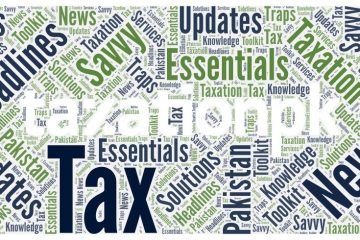In the digital age, information technology (IT) and IT-enabled services (ITES) have become the backbone of countless industries and a significant driver of economic growth. Pakistan, recognizing this potential, has established clear definitions for these vital sectors, as outlined in 2(30AD) and 2(30AE) of the relevant law. This article delves into these definitions, highlighting the key characteristics and applications of each category.
Unpacking IT Services:
2(30AD) defines IT services broadly, encompassing activities related to software and networking:
- Software Development: Creating new software applications for various purposes, from website functionality to complex business solutions.
- Software Maintenance: Ensuring the ongoing functionality, performance, and security of existing software applications.
- System Integration: Combining different software and hardware components into a coherent and seamless system.
- Web Design: Creating the visual and user interface of websites for optimal usability and aesthetics.
- Web Development: Building the technical infrastructure and functionality of websites, enabling their online presence.
- Web Hosting: Providing storage space and resources for websites to operate on the internet.
- Network Design: Planning and implementing the hardware and software infrastructure for computer networks.
Expanding the Scope: IT-Enabled Services:
2(30AE) takes the definition a step further, covering a wider range of services facilitated by IT infrastructure:
- Inbound or Outbound Call Centers: Handling customer service inquiries, telemarketing, or other phone-based interactions.
- Medical Transcription: Converting recorded medical dictation into written reports.
- Remote Monitoring: Collecting and analyzing data from remotely located equipment or systems.
- Graphics Design: Creating visual elements like logos, illustrations, and marketing materials.
- Accounting Services: Providing financial recordkeeping, analysis, and reporting services.
- Human Resource (HR) Services: Handling payroll, recruitment, onboarding, and personnel management functions.
- Telemedicine Centers: Providing remote medical consultations and healthcare services using technology.
- Data Entry Operations: Manually inputting data into digital systems for storage and analysis.
- Cloud Computing Services: Offering remote access to data storage, software, and other computing resources.
- Data Storage Services: Providing secure and reliable storage solutions for digital data.
- Locally Produced Television Programs: Producing television content entirely within Pakistan using IT infrastructure.
- Insurance Claims Processing: Managing the processing and settlement of insurance claims using IT systems.
The “Not Limited To” Clause:
Both definitions emphasize that the listed examples are not exhaustive. This open-ended approach acknowledges the ever-evolving nature of these sectors, ensuring adaptability to new technologies and emerging service categories.
Implications and Applications:
These definitions have significant implications for:
- Businesses: Understanding the scope of IT and ITES services helps businesses identify opportunities to leverage these technologies, outsource tasks, and improve efficiency.
- Government: The definitions guide policy formulation, tax regulations, and initiatives for promoting growth and competitiveness in these sectors.
- Employees: The expanding range of IT and ITES services creates new job opportunities and skill requirements, impacting the workforce landscape.
Challenges and Considerations:
Despite their clarity, some challenges remain:
- Evolving landscape: Continuous technological advancements necessitate regular updates and interpretations of the definitions to keep pace with innovation.
- Skill gap: Meeting the growing demand for qualified IT and ITES professionals requires robust training programs and skill development initiatives.
- Cybersecurity concerns: The reliance on digital infrastructure underscores the need for robust cybersecurity measures and data protection regulations.






